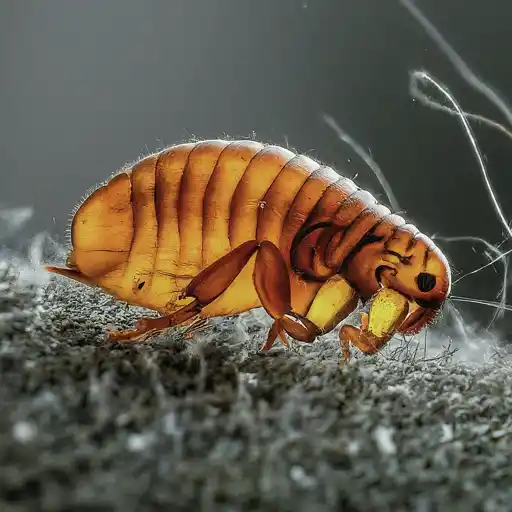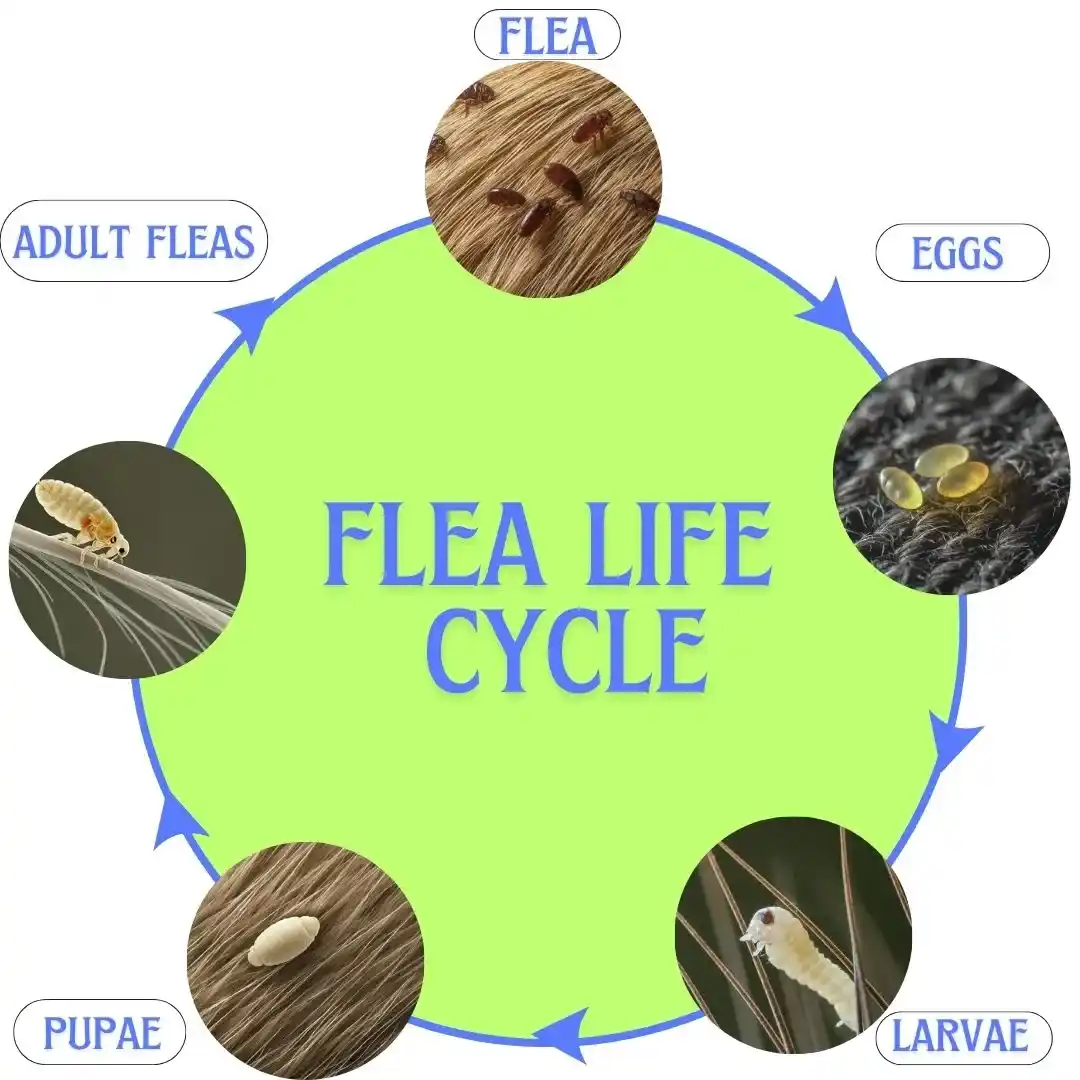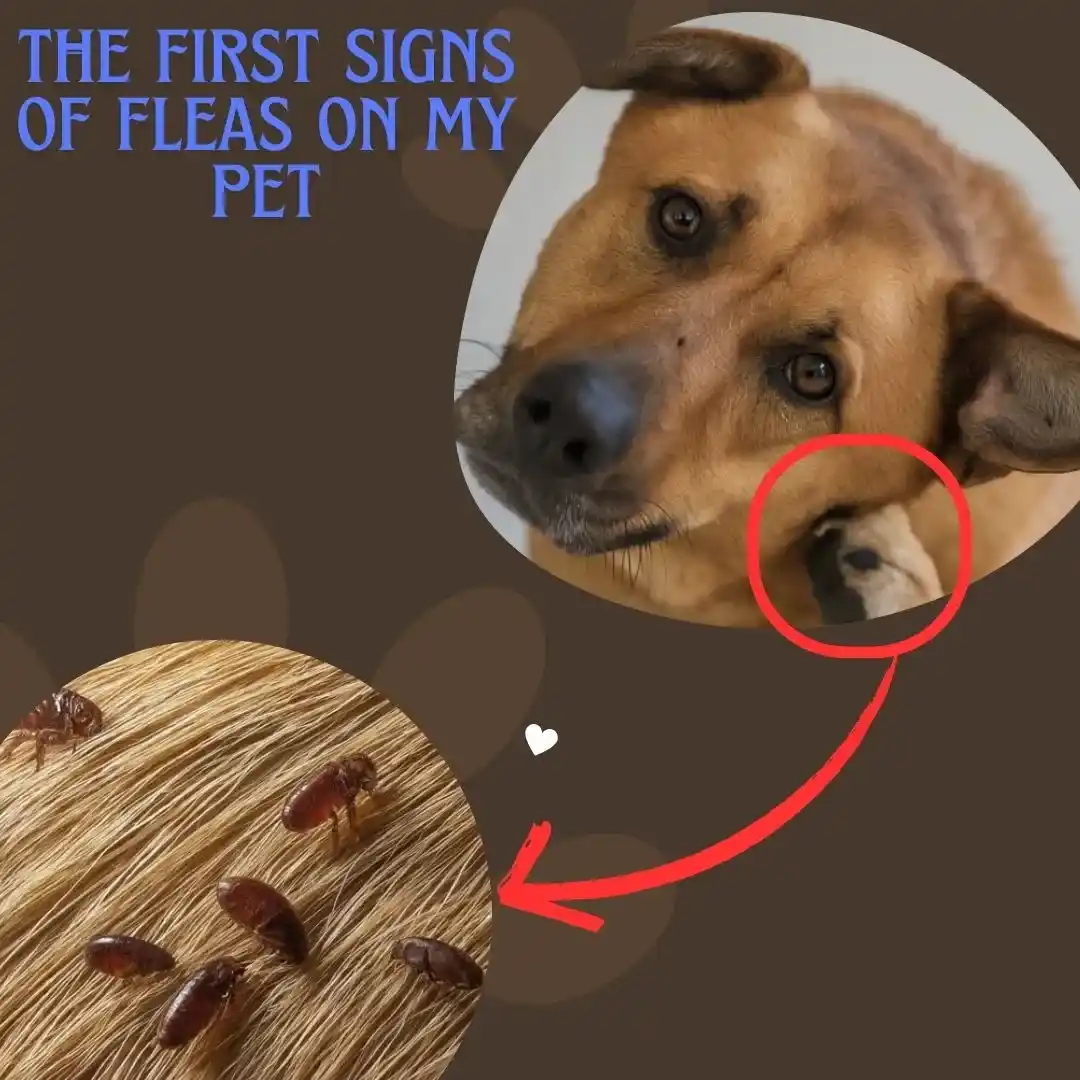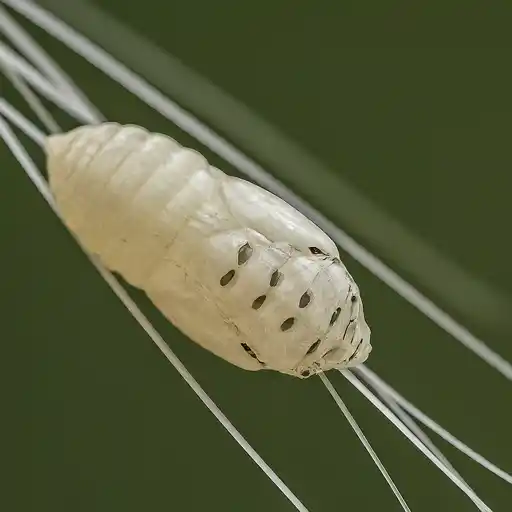Fleas may be small, but they can create significant issues. Therefore, as a pet owner or homeowner, knowing what does a flea look like is crucial for early detection and proper flea control. In addition, fleas are more than just pests—they can bite, spread diseases, and infest your pets and home. So, in this article, we’ll explore what fleas look like at every stage of their life cycle, how to identify flea infestations, and tips for preventing these pesky insects from taking over.
What Does a Flea Look Like : Flea Identification Basics
Before we dive into the nitty-gritty, first, let’s cover some basic facts about what a flea looks like. Because fleas are small, wingless parasites, they survive by feeding on the blood of animals or, occasionally, humans. And although they may be tough to spot, certain characteristics make them stand out if you know what to look for. But spotting them early can make a huge difference in controlling infestations.
What Does a Flea Look Like: Breaking Down Its Size and Appearance
One of the first things you’ll notice about a flea is its small size. Fleas typically range from 1/12 to 1/8 inch long—barely larger than a pinhead. Their small size allows them to hide easily in pet fur or carpet fibers.
- Fleas are around the size of a sesame seed.
- Smaller than common insects like ants or flies.
Flea Color: From Black to Brown

The color of a flea can vary depending on its species, age, and whether it has fed recently. Most fleas are reddish-brown or dark brown, though they may appear almost black at first glance.
- Fleas are dark reddish-brown.
- A well-fed flea may appear more red after feeding on blood.
What does a flea look like? A quick description would be a small, dark, and hard-to-spot insect.
Flea Shape and Structure
Fleas have a distinct flat body shape, making it easy for them to slip through animal fur or feathers. Their hard exoskeleton means they’re tough to crush between your fingers.
- Fleas are laterally compressed (flat).
- Their lack of wings makes them dependent on their jumping ability.
Even though they don’t fly, what fleas look like is enough to raise concerns because of their parasitic nature and ability to infest quickly. But their small size makes them difficult to notice, so it’s important to stay vigilant.
Flea Behavior and Movement: How Fleas Move on Pets and Humans
Fleas are expert jumpers and can leap up to 7 inches vertically and 13 inches horizontally. Their ability to move quickly between hosts makes them hard to catch. Once they’ve latched on, they use their piercing mouthparts to bite and feed.
What Does a Flea Legs Look Like : Powerful Jumpers
Fleas are equipped with strong hind legs that allow them to jump tremendous distances in relation to their size, and this jumping ability is key to their survival because it helps them move from one host to another with ease. However, they also rely on other factors for effective feeding
- Fleas can jump 50-100 times their body length.
- Their legs are long and muscular, perfect for jumping.
In fact, what fleas look like when they jump might surprise you with their agility.
Flea Mouthparts: Sucking Blood
Fleas have unique mouthparts designed to puncture the skin and consume blood. Once a flea bites, it will continue feeding until it’s full, thereby causing irritation for both pets and humans.
- Fleas have piercing-sucking mouthparts.
- They feed on blood and can bite multiple times.
This feature answers part of the question of what does a flea look like—an insect equipped to feed on blood.
Flea Life Cycle and What Flea Look Like at Each Stage
Fleas have four main life stages: egg, larva, pupa, and adult. Knowing what fleas look like at each stage is vital to fully understanding and controlling an infestation.

Flea Eggs: Tiny and Hard to Spot
Flea eggs are tiny, white, and often mistaken for specks of dust. Fleas can lay hundreds of eggs, typically in your pet’s fur, bedding, or carpet.
- Flea eggs are white and about 0.5 mm long.
- Eggs fall off your pet and hatch in your home.
If you’re wondering what flea eggs look like, think of tiny grains of salt scattered around.
What Does a Flea Larvae Look Like : The Growing Stage
Once the eggs hatch, flea larvae emerge. These larvae are worm-like and do not have legs. They feed on organic matter, including flea dirt, which is essentially dried blood.
- Flea larvae are about 3-5 mm long.
- They are white or translucent, with bristles along their bodies.
When identifying what flea larvae look like, you’ll notice their distinct worm-like form.
Flea Pupae: Hidden in a Cocoon
The next stage in the life cycle is the pupal stage. Flea pupae form cocoons that protect them until they transform into adult fleas. These cocoons are often hidden deep within carpets or bedding.
- Flea pupae are encased in silk cocoons.
- They can remain dormant for several months until conditions are right.
This is why what flea pupae look like is often missed—they’re protected by their cocoon.
Adult Fleas: Fully Grown and Ready to Feed
Finally, adult fleas emerge from their cocoons, ready to find a host and feed on blood. Because these adult fleas are fully developed, they are the ones most commonly seen on pets and in homes. But catching them early can help prevent infestations, so it’s important to act quickly.
- Adult fleas are reddish-brown and about 2.5 mm long.
- They are fully developed and start feeding almost immediately.
Understanding what adult fleas look like helps in quickly recognizing an infestation.
Flea Bites and Signs of Infestation
Flea bites are often the first noticeable sign of a flea infestation. These bites can cause itching, irritation, and in severe cases, allergic reactions. Flea bites can affect both pets and humans.
What Do Flea Bites Look Like on Humans?
Flea bites on humans usually appear as small, red, itchy bumps. These bites are commonly found on the legs and ankles.
- Flea bites are red, slightly raised, and itchy.
- Bites may appear in clusters or lines.
If you’re curious about what flea bites look like on humans, just think of tiny, itchy red dots.
What Do Flea Bites Look Like on Pets: How to Spot Them
Fleas on pets cause discomfort because they lead to constant scratching. And flea bites on animals often result in red, irritated patches of skin, especially around the neck and tail. But the severity of irritation can vary, so it’s important to check your pets regularly

Flea bites on pets can cause redness, itching, and hair loss. Moreover, pets with flea allergies may develop rashes or hot spots.In addition, fleas can also transmit tapeworms to pets, which can cause serious health problems.Therefore, it’s important to take steps to prevent and treat flea infestations
Looking to see how flea bites look on dogs and cats? Look for signs of intense scratching and inflamed skin.
Flea Dirt: A Key Sign of Flea Infestation
Flea dirt is another common sign of fleas,consists of tiny black specks, which are actually flea feces—dried blood left behind by feeding fleas.
- Flea dirt resembles little black or dark brown flecks.
- It turns red when placed on a wet paper towel.
Knowing what flea dirt looks like can help confirm if your pet has fleas.
What Does a Fleas Look Like on Pets and Humans : How to Check for Fleas on Pets and Humans
Inspecting your pet or your home for fleas can be challenging, but using the right techniques can make it easier. Here’s how you can check for fleas effectively.
Using a Flea Comb: The Best Way to Identify Fleas
A flea comb is a specially designed tool that helps catch fleas in your pet’s fur. The fine teeth of the comb trap fleas as you comb through the fur.
- Run a flea comb through your pet’s fur, focusing on the neck and tail.
- Dip the comb in soapy water to kill fleas on contact.
This is the best method for finding what fleas look like on your pet.
Checking Pet Bedding and Furniture for Fleas
In addition to combing your pet, it’s essential to check their bedding and common resting spots for signs of fleas, such as eggs or flea dirt.
- Inspect bedding, furniture, and carpets for flea dirt or eggs.
- Use a vacuum to help remove fleas, larvae, and eggs.
Now that you know what fleas look like, checking your home for these signs becomes easier because you can recognize them. And with this knowledge, you’ll be better equipped to spot early infestations, so you can take action before they spread.
Common Flea Species: Differences in Appearance
While all fleas share similar characteristics, different species may vary slightly in size or appearance. Knowing the common species can help you better identify and treat flea infestations.
Cat Fleas vs. Dog Fleas: What’s the Difference?
Cat fleas (Ctenocephalides felis) are the most common type of flea found on both cats and dogs. Dog fleas (Ctenocephalides canis) are less common but can still infest your pets.
- Cat fleas are more prevalent and are found on dogs, too.
- Dog fleas are slightly larger but look very similar to cat fleas.
If you’re curious what cat fleas and dog fleas look like, they are almost identical to the untrained eye.
What Does a Human Fleas Look Like : Can They Live on Humans?
Though rare, human fleas (Pulex irritans) do exist. However, fleas prefer animal hosts and rarely live on humans for extended periods.
- Human fleas can bite but prefer animals.
- They are similar in size and appearance to pet fleas.
While you might wonder what human fleas look like, they are almost identical to pet fleas.
How to Prevent and Get Rid of Fleas: A Complete Guide
Flea prevention is the best way to avoid an infestation. Regularly checking your pets, keeping your home clean, and using preventative treatments can make a huge difference.
Flea Treatments for Pets
To keep your pets flea-free, you can choose from various treatments, including topical medications, flea collars, and shampoos.
- Use flea medications monthly to prevent infestations.
- Flea collars and shampoos can provide additional protection.
If you’re dealing with fleas, knowing what fleas look like will help you choose the best treatment.
How to Treat Fleas in Your Home
If fleas have already infested your home, it’s important to act quickly. Vacuuming, washing bedding, and using flea sprays or foggers can help eliminate fleas and their eggs.
- Vacuum carpets, furniture, and pet bedding daily.
- Use flea sprays or foggers to kill adult fleas and larvae.
By staying proactive, you can prevent these pests from becoming a problem again.
Wrapping Up: Know What Does a Flea Look Like to Keep Them Away
Now that you know what fleas look like in all their forms—from eggs to adults—you can better detect and prevent infestations. Indeed, spotting the signs early is crucial for protecting your pets and home from these blood-sucking pests. Therefore, it’s important to act quickly if you suspect a flea infestation. By doing so, you can minimize the discomfort and health risks to both your pets and yourself
And by understanding their life cycle and behavior, you can take the necessary steps to keep fleas under control. So, with this knowledge, you’ll be better prepared to combat flea problems before they become severe.
FAQ: Common Questions About “What Does a Flea Look Like?”
Q1. Can fleas live on humans?
A1 : Fleas prefer animal hosts, but they can bite humans. However, they do not typically live on humans long-term.
Q2. What are the first signs of fleas on my pet?
A2 : The first signs are usually excessive scratching and the presence of flea dirt, which looks like small black specks in your pet’s fur.
Q3. How can I get rid of fleas in my home?
A3 : First, vacuum your home frequently to remove fleas and their eggs. Then, wash pet bedding in hot water to kill any remaining fleas. Finally, use flea sprays or foggers to eliminate adult fleas and larvae. By following these steps, you can effectively control flea infestations in your home
Q4. Do flea bites spread diseases?
A4 : Yes, flea bites can spread diseases such as typhus and the plague, but this is rare. However, fleas can also transmit tapeworms to pets, so it's important to manage infestations quickly because these parasites pose health risks to both animals and humans.
Q5. What does flea eggs look like?
A5 : Flea eggs are tiny, white, and oval-shaped, often mistaken for grains of salt or dandruff.
Related Articles
Can Fleas Fly ? Do They Have Wings?
October 1, 2024 :
The article clarifies that fleas cannot fly but can jump. It covers their life cycle, prevention methods, and treatment for infestations.

